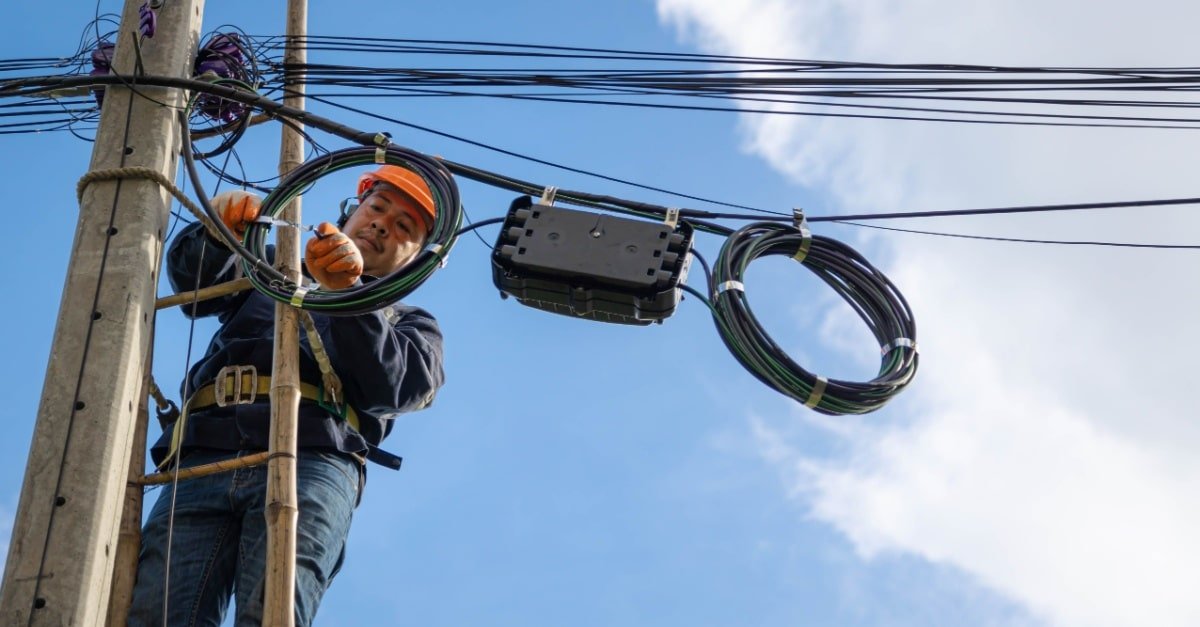
Are Electric Co-ops Worth the Taxpayers’ Money
- May 9, 2025
Last April, National Electrification Administration (NEA) Administrator Antonio Mariano Almeda opened talks with the Asian Development Bank to explore new funding avenues for electric cooperatives’ (ECs) capital needs nationwide.
According to NEA, the funding would support the building and modernization of sub-transmission systems to boost power infrastructure in the regions. The aim is more reliable, higher-quality service from ECs and better energy delivery for consumers.
While international aid helps, NEA, a state agency overseeing ECs, still depends largely on public funds. Taxpayer money from local sources underpins this support, making transparency and accountability crucial.
(Also read: Appeals Mount to Slash Electricity Prices)
NEA’s expenditures
In 2024, NEA issued around ₱1.8 billion in loans to 36 ECs—up from ₱1 billion the year before. Most of the funds, nearly ₱1.2 billion, went to capital projects across over 20 provinces, aiming to upgrade regional power infrastructure.
NEA also approved ₱607 million in working capital loans for 11 cooperatives in areas, including Capiz, Camotes Island, and Kalinga Apayao. Separately, Bohol I Electric Cooperative (BOHECO I) secured a ₱13.33-million calamity loan to repair its Janopol Mini-Hydro Plant, which was hit by Typhoon Odette in 2021.
Under NEA’s Enhanced Lending Program, ECs can access regular and short-term loans to support calamity rehabilitation, renewable energy, system upgrades, and even modular generator sets tailored to meet different operational needs.
However, Minimal Government Thinkers President Bienvenido Oplas Jr. criticized NEA as a “wasteful agency,” arguing it props up inefficient ECs through billions in taxpayer-funded subsidies and loans. He noted that despite receiving ₱12.9 billion in 2020 and annual subsidies since then, many ECs still suffer from high losses and poor service compared to more efficient private utilities.
Oplas further criticized NEA’s regulatory framework, noting that ECs are permitted system losses of up to 12%, double the 6% cap imposed on private DUs. He argued that this disparity results in higher electricity costs for consumers in rural areas.
EC inefficiencies: A drain on public funds?
As public funding continues to flow into ECs, questions are mounting over whether their persistent inefficiencies justify the cost to taxpayers.
-
Strain on tourism
The Philippines, renowned for its pristine beaches and natural attractions, saw tourism contribute 8.6% to its GDP in 2023, with revenues reaching ₱760.5 billion in 2024.
Many of these sought-after destinations are in remote areas, where ECs, established in the 1960s to spearhead rural electrification, are responsible for power supply. However, the reliability of electricity in these regions remains a concern.
In key tourism hotspots, such as the Island Garden City of Samal (IGACOS), Siargao Island, Puerto Galera, and parts of Cebu, businesses have reported significant losses due to unreliable electricity supply.
A study by the energy consumer group ILAW revealed troubling performance among local ECs in these areas. The Northern Davao Electric Cooperative (NORDECO), which serves IGACOS, received a dismal rating of 2.45 out of 10 from local businesses. Respondents cited prolonged blackouts and slow service response, resulting in estimated annual tourism losses of around ₱50 million.
On Siargao Island, the Siargao Electric Cooperative (SIARELCO) averaged a rating of 4.6, with frequent outages and voltage fluctuations damaging equipment and costing businesses up to ₱100,000 per incident.
Meanwhile, the Oriental Mindoro Electric Cooperative (ORMECO) scored 4.5 out of 10. Business owners criticized unannounced power outages and a lack of infrastructure investment, often forcing them to refund guests or lower prices to compensate for poor service experiences.
These power instability issues have led to business closures and job losses, prompting calls for stricter accountability measures and investment in microgrids.
In Siquijor, columnist Iris Gonzales highlighted the ongoing power outages, often lasting hours or happening multiple times a day. Businesses are struggling, with food at risk due to frequent “cycles of freezing and thawing”. The local distributor, the Province of Siquijor Electric Cooperative Inc. (PROSIELCO), reported a surge in power demand from 2015 to 2019 due to rising tourism.
“Unfortunately, if the precarious power situation isn’t addressed, Siquijor will remain shrouded not just in black magic, but in blackouts, too,” she wrote.
-
Questionable handling of funds
NEA has taken action against several ECs for financial irregularities. A notable instance occurred in early 2024 when NEA removed all nine board members of the Negros Occidental Electric Cooperative (NOCECO) and suspended the general manager for allegedly approving unauthorized salary increases and retirement payouts.
Furthermore, fourteen NOCECO officers were found liable for improper disbursements, leading to their removal and disqualification from holding future roles within the cooperative.
In December 2024, NEA launched an investigation into the Nueva Ecija II Area 2 Electric Cooperative Inc. (NEECO II Area 2) after discovering unauthorized withdrawals from its employees’ retirement fund. This prompted the NEA to place six board members under a 90-day preventive suspension for alleged gross neglect of duty.
The NEA also sought assistance from the National Bureau of Investigation (NBI) to determine potential criminal liabilities.
Senator Win Gatchalian emphasized that corruption within ECs erodes consumer confidence and hampers operational effectiveness. He called for enhanced oversight to ensure integrity in EC management.
-
Lack of modernization
In 2024, Senator Grace Poe and industry experts highlighted that some ECs lack the technical capacity to support growth in developing areas. For instance, the Central Negros Electric Cooperative (CENECO) was noted for its inability to meet the developmental needs of modernizing towns, raising concerns about their long-term viability.
Meanwhile, a report by the Institute of Contemporary Economics revealed that from 2022 to September 2024, ECs in Panay and Guimaras invested only ₱2.38 billion of the ₱10.52 billion allocated for capital expenditures—just 22.6% of the planned investment. This underinvestment, with only 3.1% to 3.7% of total spending on infrastructure development, has left the power grid vulnerable and unable to meet growing demand.
-
NEA under scrutiny
At times, NEA itself has faced accusations of inefficiency, especially regarding the execution of its rural electrification programs.
The Commission on Audit (CoA) flagged the NEA for failing to monitor the implementation of rural electrification efforts, resulting in approximately ₱992 million in unliquidated subsidy funds as of December 31, 2023.
These funds were allocated for rural electrification projects but remained unliquidated due to inadequate enforcement by the NEA. State auditors noted that ECs were required to settle or liquidate the subsidy funds within three months from project completion but failed to do so, indicating delays in project completion and fund utilization.
Last August 2024, The NEA announced delays in its goal of providing electricity to the entire country by 2028. While the agency aims to achieve 100% electrification, it acknowledged that the target would be set back by at least two to three years due to funding constraints and implementation challenges. The NEA emphasized the need for increased government subsidies to meet the electrification targets.
(Also read: Are Electric Cooperatives Still Relevant Today?)
Conclusion
House Resolution No. 1302, filed in 2023, by Deputy Majority Leader Erwin Tulfo and other lawmakers, calls for reviewing and possibly revoking the franchises of underperforming ECs due to frequent brownouts and poor service. It also suggests exploring alternatives, such as new cooperatives or other models, to improve electricity provision in underserved areas.
Columnist Ben Kritz has long highlighted the frustration surrounding the poor performance of many ECs in the Philippines. He said this issue has persisted for years, often only being addressed when cooperatives collapse in severely affected areas.
“If this country is going to realize any of its economic and social aspirations, the parlous state of electricity distribution outside of areas served by big utilities is going to need to be addressed, and soon,” he wrote.
Meanwhile, Oplas has consistently called for the abolition of NEA and the transformation of ECs into private corporations regulated by the Securities and Exchange Commission (SEC), thereby eliminating their reliance on taxpayer subsidies and promoting a more competitive and efficient energy sector.
These critiques underscore systemic issues within Philippine ECs, prompting calls for comprehensive reforms, stricter oversight, and, in some cases, complete structural overhauls to ensure reliable and equitable electricity distribution across the nation. They also raise serious questions about whether these entities are delivering value that justifies the taxpayers’ money being spent.
Sources:
https://en.wikipedia.org/wiki/Tourism_in_the_Philippines
https://manilastandard.net/?p=314473207
https://legacy.senate.gov.ph/press_release/2024/0213_gatchalian1.asp
https://dailyguardian.com.ph/power-sector-must-adapt-to-new-challenges
https://www.pna.gov.ph/articles/1210129
https://www.manilatimes.net/2025/03/25/opinion/columns/the-electric-co-op-crisis/2078865
https://www.philstar.com/opinion/2025/04/22/2437410/black-magic-blackouts



